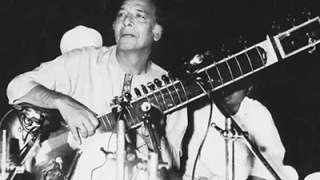MEDIA
Review: The Sixth String of Vilayat Khan by Namita Devidayal
www.hindustantimes.com | February 15, 2019
From his pride in his Mercedes to his rivalry with Pt Ravi Shankar, Namita Devidayal’s portrait of Vilayat Khan catalogues the events of the sitar maestro’s life
There are several regrets in my life; one of them is not having listened to Ustad Vilayat Khan live in concert. Recorded music can seldom reproduce the joy of a live performance. Every recording is a different rendition, a new rumination on what has been sung or played before. For many like me who had no access to the maestro and for others who perhaps did, a book like Namita Devidayal’s The Sixth String of Vilayat Khan becomes imperative. At the beginning, the author states her intention when she declares, “I have tried to create an impressionistic fluid portrait - of a magnificent artiste and a fragmented human being.” Biographies in India and particularly those dealing with performing artists are often hagiographic. Objectivity is invariably martyred. The author or raconteur is often an acolyte trying to pass off as an unbiased narrator. These accounts portray the artist as a wronged genius, a much misunderstood maestro who never got his due or go to the other extreme of singing paeans about his achievements often inventing stories that never happened. Indian artist biography, thus, is a rather peculiar genre and it was reassuring to hear from the author that she has no illusions about the subject of her book.
Vilayat Khan’s story has the tropes of the normative rags-to-riches saga. He lost his father, the celebrated Enayat Khan in childhood. Many still speculate on how his music might have changed if his father had lived longer and continued to train him. Vilayat’s mother, Basheeran Begum, was a disciplinarian who held the family together. In many ways, this book is also her story – a single woman who carved the careers of her illustrious sons. To escape her harsh regimen, Vilayat ran away to Delhi where he was sheltered by Zulfiqar Ali Bukhari at All India Radio. He heard recordings of old masters and met many maestros here. Later, he also learnt from his maternal grandfather and uncle in Saharanpur for long stretches. Various streams thus assimilate in his musical training shaping a unique sensibility. Replete with highs and lows, Vilayat Khan’s life reads like a film script with numerous affairs, a failed first marriage, a constrained relationship with his children, the falling out with brother Imrat, his rivalry with Pandit Ravi Shankar, and his proximity with spiritual leader Jagjit Singh. Vilayat Khan is also presented as an exhibitionist who loved to show off his brand new Mercedes, coaxed friends into organising parties for him, enjoyed rubbing shoulders with the elite, rehearsed his concert look and even got his children to do the same, amongst many other anecdotes. He was extremely conservative in his attitude to women and wanted his daughters to look and dress a certain way. Other stories of his gargantuan ego are also narrated with great flair. Devidayal presents a man easy to despise and difficult to admire. But she offers very little insight into his music. Bits of personal trivia make for interesting reading but they don’t explain how the flawed man became a celebrated artist. This is a major shortcoming. Devidayal writes, “He had experienced inordinate pain, but he also believed that sadness was crucial to music.” Such baffling statements are not an objective analysis of his music.
Vilayat Khan left Bombay in the mid-1960s and retreated to the hills of Shimla. Devidayal writes, “I went to Shimla, and then beyond, to reconnect with myself and also to find out why Vilayat Khan came here.” The chapter “Life in the Hills” is the book’s weakest. It catalogues a series of events without probing the music he created there or how the place shaped his work. Also, the book attempts to pander to popular interest in Vilayat Khan’s much touted rivalry with his contemporary, Ravi Shankar. An entire chapter titled The Frenemy is dedicated to the subject. She writes, “While researching the book, I kept trying to find that sensational angle which would transform a boring biography into a page-turner, and the one that seemed most obvious was the rivalry between the two sitar players, which I would fashion into an epic story, as Milos Forman did with Antonio Salieri and Amadeus Mozart in the film Amadeus.” Is it desirable to be sensational? In the quest for the sensational, the book misses out on the private and the internal, leaving no space for interiority which is key to the art-making process. Devidayal mentions the thehrav in Vilayat’s music but it is precisely this quality that her writing lacks. There is a marked absence here of reflection about the man and his music.
Like many Indian classical musicians of his generation, Vilayat Khan moved to USA in 1991. He built a new life there with son Hidayat and wife Zubeida. Ill health forced him to cut down on concert commitments and he largely lead a private life in the company of close friends in the salubrious locales of Princeton. He died in Mumbai in 2004. At a concert in Delhi in 2000, an ailing Vilayat Khan said, “I can’t play the way I used to. But if nothing else, please listen to my intention….” The Sixth String… would have been a more rewarding read if it had explored the intention of the artist’s music. Vilayat Khan deserves a better book written with more nuance, empathy and discernment.
Kunal Ray teaches literary & cultural studies at FLAME University, Pune

